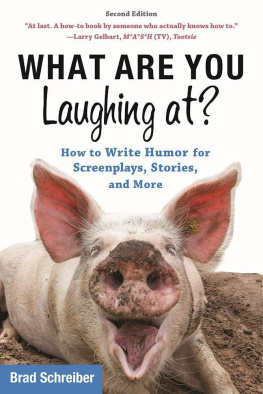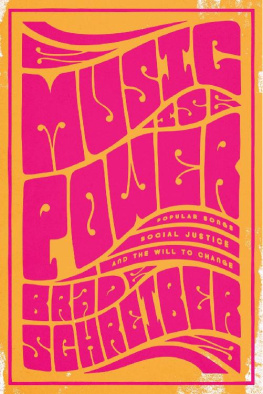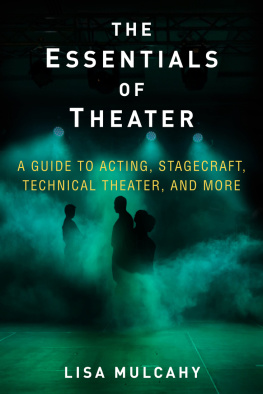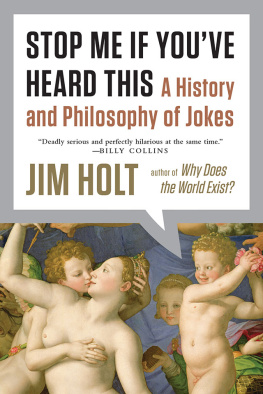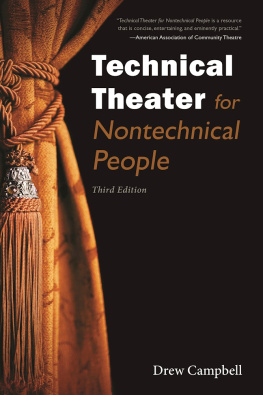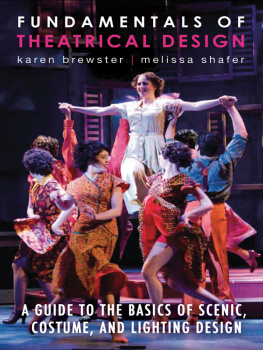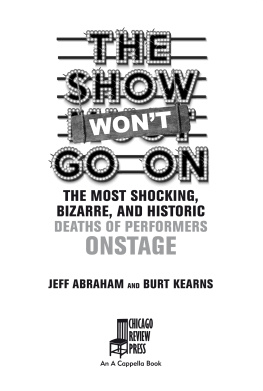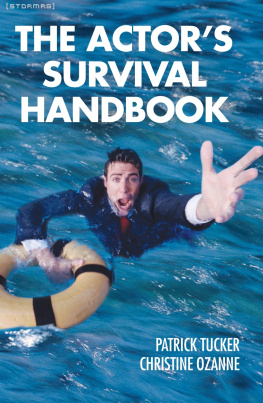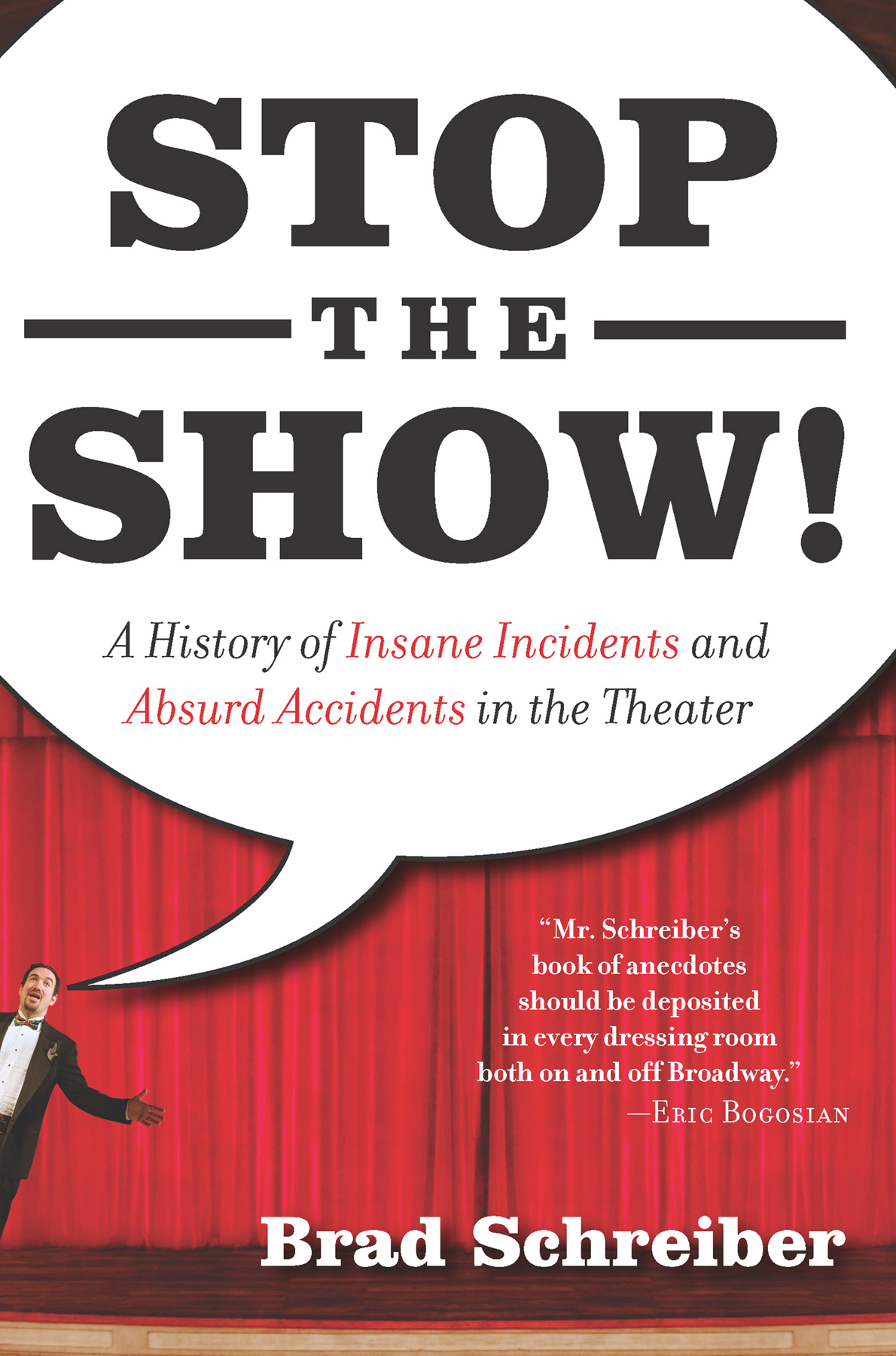An Imprint of Avalon Publishing Group, Inc.
All rights reserved. No part of this publication may be reproduced or transmitted in any form or by any means, electronic or mechanical, including photocopy, recording, or any information storage and retrieval system now known or to be invented, without permission in writing from the publisher, except by a reviewer who wishes to quote brief passages in connection with a review written for inclusion in a magazine, newspaper, or broadcast.
Library of Congress Cataloging-in-Publication Data is available.
Book design by Maria E. Torres
T HE INSPIRATION FOR this book, oddly enough, was Cyril Claytons private parts.
In the mid-1980s, Cyril was performing a role in Terrence McNallys play Noon in San Francisco. A friend and I went to support Cyril as audience members.
In this farce, Cyril was playing a middle-aged man whos into sadomasochistic sex. He wore a frighteningly small leather bikini brief, held up by leather straps and studded with metal. He looked like he was wearing Nazi S&M lederhosen.
Cyril is a round, balding, boisterous, charming Englishman. I am convinced he would have been a successful music hall comedian in a previous lifetime. He more than makes up for the lack of hair on his head with the hair on his chest, stomach, legs, shoulders, ears, and other areas you generally dont need it.
Cyril got plenty of laughs that night with his outfit and personality. But what really brought down the house was this: while he was running about onstage, one of his testicles popped out of his kinky leather underwear and swung about like a chandelier at a wild party.
The audience laughed loudly. Cyril, God love him, thought it was due to his broad characterization and redoubled his efforts to jump around onstage. The more his scrotum danced about, the more the audience roared.
My friend and I laughed until we could not breathe, but all the while, we were horrified. This was our friend, being utterly humiliated without even knowing it. The audience was having a ball at his expense.
I told other theater artists about the Cyril story, emphasizing its peculiar blend of horror and hilarity. What I found fascinating was that these other directors, actors, playwrights, technicians, and designers often had this kind of response: Oh, yeah, hanging out of his underwear. Listen, I have a really good story And often, they did.
Theater is like no other performing art. It is live human beings in real time. There can be no editing out of mistakes. If youre injured, you carry on. If you forget your line, someone else onstage covers for you. Some twigs can be a forest. A beauty salon can double as a performance space.
Theater has no restrictions as to language or subject matter. And the written word is sacred. You say the writers words as intended, no matter who you are, no matter how big a star. (Unless some scenery falls on you, in which case you are entitled to make up a line of your own.)
Is it any wonder, then, considering this most immediate of art forms, that one could become obsessed with finding the most mind-boggling stories of things that took place during a live performance?
I have worked in the theater as a playwright, actor, director, and producer, and when I was in two comedy troupes, the Burlingame Philharmonic Orchestra and Friends of the Ozone, I even designed costumes, properties, and sound. As a theater critic, Ive sat through many a play that made me cringe, that made me want to shriek and run out of the theater, frothing at the mouth.
So why do I still love it? Because when it works, my friends, when it really works, there is nothing like it. The emotions are deeper. The laughs are richer. It is more powerful than the most expensive special effects movie that will ever be made.
It is live humans in real time, subject to the laws of gravity, memory, and audience audacity.
And when something unplanned happens, whether it is handled superbly or horribly, it lives in your mind forever. It becomes its own very special, elevated form of theater.
Brad Schreiber,
Los Angeles, February 2006
J OHN G IELGUD WAS celebrating the centenary of Henrik Ibsen in the play Ghosts with Mrs. Patrick Campbell, and no doubt, the production probably felt like it lasted a hundred years, too. While Mrs. Campbell was renowned for her acting abilities, she was not recommended for her manners. She insulted the man playing Pastor Manders during one performance by turning her back to the audience and announcing, with a look of disgust on her face, Oh, look at that old man with the sweat pouring onto his stomach.
That would have been more than enough, but during rehearsals for the same run, Campbell insisted on coaching the young Gielgud on a particular scene in which he would point to his forehead and, referring to a mental illness, say, The disease I suffer from is seated here.
During their first performance, just before Gielgud recited this emotional line, which he and Campbell had practiced scores of times, she announced to him aside, lackadaisically, Oh, I am so hungry.
Allowing an ensemble to improvise lines can be treacherous, especially if the background actors are a bit too creative.
When Michael Benthall was directing Julius Caesar at the Old Vic, he castigated the ensemble for a lack of authenticity in their background reactions. Just behave as you would normally in a crowded street, he told them.
That night, a member of a crowd scene walked offstage in his toga, shouting Taxi!
Another production of Julius Caesar proved that when things go wrong onstage, one of the best ways to cover up the mess is to blame it all on a character who is dead.
Caesar was quite dead, both in real life and in the Shakespeare play, when Joseph Maher and John Tillinger (now a noted director) were performing at the American Shakespeare Festival in Stratford, Connecticut.
Maher and Tillinger had killed the emperor, but no one had bothered to kill the ringer on the pay phone, newly installed backstage.
With the dead body of Caesar bloody at their feet, the actors and audience heard the pay phone ring and ring.
Finally, Maher turned to Tillinger and asked conspiratorially, What if its for Caesar?


